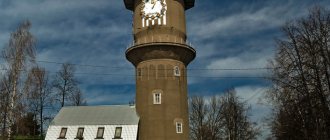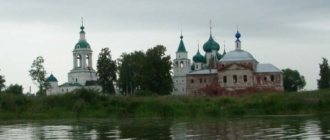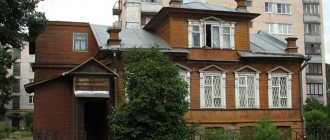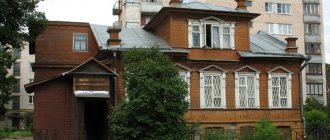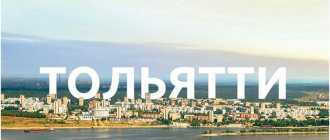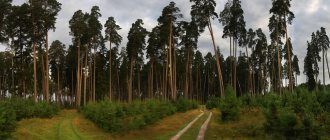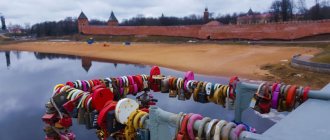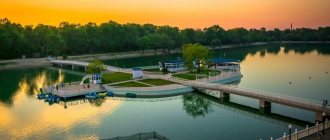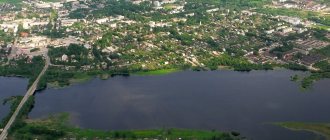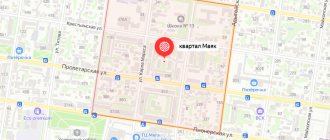Museum of History of the Kokhma Urban District
There are many more interesting details in the process of Kokhma’s formation, which you can find out by visiting the Museum of the History of the Kokhma Urban District. It was founded in 2008 in the building of the Yasyuninsky School.
The museum has many exhibits that will help you better understand this city, and the entire district as a whole. These are authentic documents, photographs, books, albums, paintings, household items and much more.
The above-mentioned museum is located in the building of a school built by the Yasyuninsky merchants at the end of the nineteenth century. Initially, it was a parish school, then, at the request of merchants, it was transformed into a two-class ministerial institution of public education. In 1889, on the initiative of the Yasyuninskys, a new building was erected and inaugurated, which has survived to this day.
Location: Sovetskaya street - 30.
Population
| Population | ||||||||
| 1859[12] | 1897[13] | 1905[14] | 1931[15] | 1939[16] | 1959[17] | 1967[15] | 1970[18] | 1979[19] |
| 1125 | ↗3337 | ↗5663 | ↗13 600 | ↗18 983 | ↗20 252 | ↗22 000 | ↗22 323 | ↗25 239 |
| 1989[19] | 1992[15] | 1996[15] | 1998[15] | 2001[15] | 2002[10] | 2003[15] | 2005[15] | 2006[15] |
| ↗26 831 | ↗27 000 | ↗27 300 | ↗27 600 | ↗28 500 | ↗28 761 | ↗28 800 | ↘28 600 | →28 600 |
| 2007[15] | 2009[11] | 2010[19] | 2011[15] | 2012[20] | 2013[21] | 2014[22] | 2015[23] | 2016[24] |
| →28 600 | ↘28 591 | ↗29 411 | ↘29 400 | ↗29 414 | ↘29 405 | ↘29 389 | ↘29 258 | ↗29 770 |
| 2017[25] | 2018[26] | 2019[27] | 2020[28] | 2021[1] | ||||
| ↗30 316 | ↗30 500 | ↘30 220 | ↘30 161 | ↗30 336 | ||||
As of January 1, 2022, in terms of population, the city was in 496th place out of 1,116[29]cities of the Russian Federation[30].
Yasyuninsky Estate
There is another building in the city that once belonged to the merchant Vasily Nikitich Yasyuninsky. This is a family estate with an observatory on the roof, where the merchant’s children and grandchildren subsequently lived and watched the stars. Later, the building housed the local district party committee, a newspaper editorial office and printing house, a technical school, a boarding school, a school for working youth and, finally, an art school, which still operates to this day.
Location: Ivanovskaya street - 8.
When is distance calculation useful?
Free calculation of distances between cities shows the exact distance between cities and calculates the shortest route with fuel consumption. It may be required in the following cases:
- The distance calculation service helps plan a route for a road traveler, for example, for a summer holiday with his family or when planning a business trip by car. Knowing the gasoline consumption and the average price per liter of fuel, it is not difficult to calculate the obligatory financial costs of the trip.
- For a truck driver, calculating the distance between cities allows you to plot a route on the map when preparing for a long trip.
- The distance calculator is useful for the shipper to determine the mileage and, in accordance with the tariffs of the transport company, estimate the cost of cargo transportation.
Administration building
One of the grandsons of Vasily Nikitich, namely Vasily Arsenievich, at the very beginning of the twentieth century, built another estate in the city, consisting of a residential building, a gate, a fence and stables with a carriage house.
Initially, he planned to settle in the estate himself, but something didn’t work out, and he began to rent it out. Until 1917, the German colorist Metzger lived there with his family, and after the revolution the City Council settled there. From 1998 to the present day, the administration of Kokhma is located in the estate of V. A. Yasyuninsky.
Location: Sovetskaya street - 23.
Notes
- ↑ 123
www.gks.ru/free_doc/doc_2016/bul_dr/mun_obr2016.rar Population of the Russian Federation by municipalities as of January 1, 2016 - THE USSR. Administrative-territorial division of the union republics on January 1, 1980 / Compiled by V. A. Dudarev, N. A. Evseeva. - M.: Publishing house "Izvestia of the Soviets of People's Deputies of the USSR", 1980. - 702 p. — P. 122.
- ↑ 12
[www.ivanovoobl.ru/departmentregulation.aspx?id=55 Charter of the Kokhma Urban District] - [www.rk37.ru/index.php?go=one_news&id=3066 The patrimony of the hero of the Time of Troubles]
- ↑ 1 2
[statehistory.ru/1937/Formirovanie-fabrichnogo-goroda-Kokhma/
Vodarsky Ya. E.
Formation of the factory town of Kokhma] - "Vladimir province. List of populated places according to information from 1859", St. Petersburg, 1863 [kartolog.ru/2009/11/spiski-naselennyx-mest-rossijskoj-imperii/]
- ↑ 12345678910111213
[www.MojGorod.ru/ivanovsk_obl/kohma/index.html People's encyclopedia “My City”. Kokhma]. Retrieved July 2, 2014. [www.webcitation.org/6QlskfRhY Archived from the original on July 2, 2014]. - [demoscope.ru/weekly/ssp/rus59_reg2.php All-Union Population Census of 1959. The size of the urban population of the RSFSR, its territorial units, urban settlements and urban areas by gender] (Russian). Demoscope Weekly. Retrieved September 25, 2013. [www.webcitation.org/6GDOghWC9 Archived from the original on April 28, 2013].
- [demoscope.ru/weekly/ssp/rus70_reg2.php All-Union Population Census of 1970 The size of the urban population of the RSFSR, its territorial units, urban settlements and urban areas by gender.] (Russian). Demoscope Weekly. Retrieved September 25, 2013. [www.webcitation.org/6GDOiMstp Archived from the original on April 28, 2013].
- ↑ 123
[ivanovo.gks.ru/wps/wcm/connect/rosstat_ts/ivanovo/resources/4ce371004da3f783837cf741cd117b4b/itogi_vpn2010_table_volume_1.pdf Results of the 2010 All-Russian Population Census, volume 1. Number and distribution of the population of the Ivanovo region]. Retrieved August 8, 2014. [www.webcitation.org/6Rfo0NidC Archived from the original on August 8, 2014]. - [www.perepis2002.ru/ct/doc/1_TOM_01_04.xls All-Russian Population Census 2002. Volume. 1, table 4. Population of Russia, federal districts, constituent entities of the Russian Federation, districts, urban settlements, rural settlements - regional centers and rural settlements with a population of 3 thousand or more]. [www.webcitation.org/65AdCU0q3 Archived from the original on February 3, 2012].
- [www.gks.ru/bgd/regl/B09_109/IssWWW.exe/Stg/d01/tabl-21-09.xls Number of permanent population of the Russian Federation by cities, urban-type settlements and districts as of January 1, 2009]. Retrieved January 2, 2014. [www.webcitation.org/6MJmu0z1u Archived from the original on January 2, 2014].
- [www.gks.ru/free_doc/doc_2012/bul_dr/mun_obr2012.rar Population of the Russian Federation by municipalities. Table 35. Estimated resident population as of January 1, 2012]. Retrieved May 31, 2014. [www.webcitation.org/6PyOWbdMc Archived from the original on May 31, 2014].
- [www.gks.ru/free_doc/doc_2013/bul_dr/mun_obr2013.rar Population of the Russian Federation by municipalities as of January 1, 2013. - M.: Federal State Statistics Service Rosstat, 2013. - 528 p. (Table 33. Population of urban districts, municipal districts, urban and rural settlements, urban settlements, rural settlements)]. Retrieved November 16, 2013. [www.webcitation.org/6LAdCWSxH Archived from the original on November 16, 2013].
- [www.gks.ru/free_doc/doc_2014/bul_dr/mun_obr2014.rar Table 33. Population of the Russian Federation by municipalities as of January 1, 2014]. Retrieved August 2, 2014. [www.webcitation.org/6RWqP50QK Archived from the original on August 2, 2014].
- [www.gks.ru/free_doc/doc_2015/bul_dr/mun_obr2015.rar Population of the Russian Federation by municipalities as of January 1, 2015]. Retrieved August 6, 2015. [www.webcitation.org/6aaNzOlFO Archived from the original on August 6, 2015].
- taking into account the cities of Crimea
- [www.gks.ru/free_doc/doc_2016/bul_dr/mun_obr2016.rar Population of the Russian Federation by municipalities as of January 1, 2016. Table “31. Population of cities and towns by federal districts and constituent entities of the Russian Federation as of January 1, 2016.” RAR archive (1.0 MB)]
- [commfy37.ru/company/3414365 OGOI “Kokhomskaya boarding school of the VI type” - Ivanovo region]
Barracks with People's House
These barracks were built specifically for single factory workers. In addition to the housing itself, there was a dining room and a library. As well as a theater, which occupied the entire top floor and included a large auditorium with a stage, dressing rooms and warehouses for props.
The theater was highly valued by factory owners; it had its own troupe consisting of workers. This is also evidenced by the fact that on the central facade of the barracks there is the inscription “THEATRE”. Another grandson of the merchant Yasyuninsky, namely Nikolai Arsenievich, had a hand in his appearance.
After the revolution of the seventeenth year, no one lived in the barracks building, but various organizations were located. At first there was a club for one of the city's enterprises, then a school, a hospital and a district hospital, and today it is just an ancient monument.
Location: Ivanovskaya street - 36.
Excerpt characterizing Kokhma
“They, your honor,” said the clerk in the frieze overcoat, “they, your highness, at the announcement of the most illustrious count, without sparing their lives, wanted to serve, and not like some kind of riot, as said from the most illustrious count...” “The count did not leave, he here, and there will be orders about you,” said the police chief. - Let's go! - he said to the coachman. The crowd stopped, crowding around those who had heard what the authorities said, and looking at the droshky driving away. At that time, the police chief looked around in fear and said something to the coachman, and his horses went faster. - Cheating, guys! Lead to it yourself! - shouted the voice of a tall guy. - Don't let me go, guys! Let him submit the report! Hold it! - voices shouted, and people ran after the droshky. The crowd behind the police chief, talking noisily, headed to the Lubyanka. - Well, the gentlemen and the merchants have left, and that’s why we are lost? Well, we are dogs, or what! – was heard more often in the crowd. On the evening of September 1, after his meeting with Kutuzov, Count Rastopchin, upset and offended by the fact that he was not invited to the military council, that Kutuzov did not pay any attention to his proposal to take part in the defense of the capital, and surprised by the new look that opened up to him in the camp , in which the question of the calm of the capital and its patriotic mood turned out to be not only secondary, but completely unnecessary and insignificant - upset, offended and surprised by all this, Count Rostopchin returned to Moscow. After dinner, the count, without undressing, lay down on the sofa and at one o'clock was awakened by a courier who brought him a letter from Kutuzov. The letter said that since the troops were retreating to the Ryazan road outside Moscow, would the count like to send police officials to lead the troops through the city. This news was not news to Rostopchin. Not only from yesterday’s meeting with Kutuzov on Poklonnaya Hill, but also from the Battle of Borodino itself, when all the generals who came to Moscow unanimously said that another battle could not be fought, and when, with the count’s permission, every night government property and residents were already removing up to half let's leave - Count Rastopchin knew that Moscow would be abandoned; but nevertheless, this news, communicated in the form of a simple note with an order from Kutuzov and received at night, during his first sleep, surprised and irritated the count. Subsequently, explaining his activities during this time, Count Rostopchin wrote several times in his notes that he then had two important goals: De maintenir la tranquillite a Moscow et d'en faire partir les habitants. [Keep calm in Moscow and escort the residents out of it.] If we allow this dual goal, every action of Rostopchin turns out to be impeccable. Why were the Moscow shrine, weapons, cartridges, gunpowder, and grain supplies not taken out? Why were thousands of residents deceived by the fact that Moscow would not be surrendered and ruined? – In order to maintain calm in the capital, Count Rastopchin’s explanation answers. Why were piles of unnecessary papers removed from public places and the Leppich ball and other items? – In order to leave the city empty, Count Rastopchin’s explanation answers. One has only to admit that something threatened the people's peace, and any action becomes justified. All the horrors of terror were based only on concern for public peace. What was Count Rastopchin’s fear of public peace in Moscow based on in 1812? What reason was there for supposing there was a tendency towards indignation in the city? Residents left, troops, retreating, filled Moscow. Why should the people rebel as a result of this? Not only in Moscow, but throughout Russia, upon the entry of the enemy, nothing resembling indignation occurred. On September 1st and 2nd, more than ten thousand people remained in Moscow, and apart from the crowd that had gathered in the courtyard of the commander-in-chief and attracted by him himself, there was nothing. Obviously, it would be even less necessary to expect unrest among the people if after the Battle of Borodino, when the abandonment of Moscow became obvious, or, at least, probably, if then, instead of agitating the people with the distribution of weapons and posters, Rostopchin took measures to the removal of all sacred objects, gunpowder, charges and money, and would directly announce to the people that the city was being abandoned. Rastopchin, an ardent, sanguine man who always moved in the highest circles of the administration, although with a patriotic feeling, did not have the slightest idea about the people he thought of governing. From the very beginning of the enemy’s entry into Smolensk, Rostopchin envisioned for himself the role of leader of the people’s feelings—the heart of Russia. It not only seemed to him (as it seems to every administrator) that he controlled the external actions of the inhabitants of Moscow, but it seemed to him that he controlled their mood through his proclamations and posters, written in that ironic language that the people in their midst despise and which they do not understands when he hears it from above. Rostopchin liked the beautiful role of the leader of popular feeling so much, he got used to it so much that the need to get out of this role, the need to leave Moscow without any heroic effect, took him by surprise, and he suddenly lost from under his feet the ground on which he stood, he absolutely did not know what should he do? Although he knew, he did not believe with all his soul in leaving Moscow until the last minute and did nothing for this purpose. Residents moved out against his wishes. If public places were removed, it was only at the request of officials, with whom the count reluctantly agreed. He himself was occupied only with the role that he made for himself. As often happens with people gifted with an ardent imagination, he knew for a long time that Moscow would be abandoned, but he knew only by reasoning, but with all his soul he did not believe in it, and was not transported by his imagination to this new situation.
Cinema "Vostok"
There are a lot of architectural attractions in Kokhma, one of which is the Vostok cinema, although it was originally called Soyuzkino.
The cinema was built in 1931 due to the fact that Kokhma received city status. This was everyone’s favorite place, the foyer was a green garden laid out by the Shcherbakov factory owners, a brass band played in it, people enjoyed the music and danced. Exhibitions and creative evenings were constantly held there. This continued until 1990, when the cinema was closed due to lack of profit. And since 2001, the building has housed the production of buttons. The beautiful garden, despite its status as a natural monument, is unfortunately abandoned.
Location: Oktyabrskaya Square - 16.
Naboynaya Manufactory
Another oldest representative of the architectural and historical heritage of Kokhma is the printing manufactory building, built at the turn of the 18th and 19th centuries. It was part of a complex of factory buildings owned by the Chernyshev merchants, which is why city residents call this place “Chernyshevsky Dvor”.
Location: Oktyabrskaya street - 30.
Temples and chapels
At the beginning of the 20th century, there were five Orthodox churches in Kokhma, as well as a number of chapels, which at that time were the main architectural and cultural decoration of the city. It would be great to look at them, but, unfortunately, at the end of the same century they were destroyed for a number of reasons. But new ones appear, no less beautiful and interesting. For example, the Holy Annunciation Church (1 Oktyabrskaya St., pictured above), which began construction in 1998 and was consecrated in 2011.
On the ground floor of the temple there is a kind of museum, or rather a “Spiritual and Educational Center”. Curious and rare exhibits are exhibited there - ancient church utensils and vestments of clergy stitched with gold threads, silver coins, historical books, documents and much more. It's worth a visit, very interesting and unusual. The city also has the Chapel of the Icon of the Mother of God “Quench My Sorrows” (13 Rabochaya Street, pictured above), built and consecrated a little earlier, namely in 1997.
Kokhma. City in Ivanovo region. According to legend, the settlement existed here “during the time of the Tatars.” The first written mention is in 1519. At the end of the 16th and beginning of the 17th centuries. - a village in the possession of the Skopin-Shuisky princes. All R. 17th-early 18th centuries - church property. Since 1720 it has been one of the centers of linen production. By 1917 it was a large factory settlement. Since 1925 - a city. Enterprises: cotton and paper mill "Kokhma-Textiles", flax, spinning and weaving factory "Lenok", construction machinery plant "Strommashina". Population – 29.4 thousand people.Intro. "Kohma Ila"
A couple of years ago, on the “Beatle” Abbey Road in London, the inscription “Kohma ILA” appeared. Like “Kokhma is alive.” Written by fans of the Kokhom beat group G.R.K. was "Kohma POWER". But in the webcam picture, one letter turned out to be covered by a gate leaf. And people all over the world just so accidentally became familiar with our native Meryan Kalyak. It turned out great!
Kokhma. The mystery of the name.
No one can say with certainty what the name of the city Kokhma represents. Over the past decades, several plausible and not painful versions have been put forward.
Some people talk about the “land of Koch” without even trying to find out the etymology of this name.
Others are convinced that it is a "mountainous, hilly land" or even the "Top of the Earth." Indirect evidence is provided in support: the fact that Kokhma is located on the hills (Mayskaya Gorka, Lyubimaya Gorka, Monastyrskaya Hill, Kapkas (Caucasus)), that villages with similar names in Karelia and Finland (Kuhmo, Kukhmoinen) are also located in high places , as well as the fact that Kokhma is located in the upper reaches of the Uvod (Uvat) river. However, this version does not find close parallels in linguistics. Except perhaps for the allusion to the German “hoch”. What a joke!
“Rodnovers” see here the Slavic phrase “kokhane myasto” (in “kokh.-mya”), which is presented as a “favorite/wonderful place.” The place is truly wonderful: a green valley with lush willow crowns, framed by hills with a pine forest. But from a linguistic point of view, this version does not stand up to criticism: it is not in the nature of Slavic (and other) languages to “abbreviate” words when forming toponyms...
A more productive option seems to be one that connects the name Kokhma with the Balto-Finnish lexical layer. Hence the version that the name was born from the exclamation: “here is the earth!” Here there is a similarity, for example, with the Estonian “kokht” / “koha” - place, area, plus “maa” - land, region. The terms are close and partially overlapping in meaning. Therefore, their combinations give concepts with shades of meaning. “Koht maa” is the place of the earth. "Koha maa" - "from the land, from the country." “Maa kokht” - land premises. "Maa kokha" is a plot of land. "Maakoht" / "Maakohha" - rural area.
Based on these options, we can assume the original meaning of the name. Perhaps they meant “a meeting place for residents of a rural district.” Or maybe - “a border area for the Suzdal Meryas.” Or, if the Merya’s word construction was somewhat more free than that of the Balto-Finns, it was “destiny”, “estate”.
Kokhma is in freedom.
The modern toponymic joke, full of self-irony, is also curious: “ Kohma is the capital of Japan .” We’ll give a funny “solution” to this joke at the end of the essay. Here we are interested in its ethnographic subtext. People noticed how unusual the name of their town sounded to the Russian ear, were faced with the question “Where is it?!”, and realized that they lived in an unusual place. Hence the self-irony and the attempt to “turn the arrows” with a funny “solution”. In this regard, we add that one of the parts of the village of Kokhma (northwest of the historical center - beyond the stream, towards Ivanov) until the middle of the 20th century was called “ Peipus region ”.
Kokhma is a mysterious corner.
Kokhomsky artist Alexander Lebedev and his creation.
Kokhma. The inheritance of the Skopin-Shuisky princes.
On a high hill in the very center of Kokhma there is an ancient quarter of an unusual round (egg-shaped) shape. Here once (in the 16th and early 17th centuries) was the center of the inheritance of the Skopin-Shuisky princes, who owned the Kokhomskaya volost in the Shuisky district, which then included the lands of the present city of Ivanovo. Apparently, it was a small fortress, inside of which there was a courtyard (estate) of the prince and a church. A village grew up around the fortress. It seemed to “embrace” the historical center from the northwest and northeast.
The Kokhma Pogost (tax district of local Slavic-Merians) has been part of the Shuya inheritance of the princes of the Suzdal-Nizhny Novgorod dynasty since ancient times. Under Ivan the Terrible, this area became a state-owned land (“Oprichnina”). For some time they were under the control of the Shuryev of Ivan Vasilyevich - the princes of Cherkassy. But they were soon transferred to representatives of one of the branches of the Shuisky princes - Skopin-Shuisky.
Ivan Vasilyevich “Skopa” Shuisky (late 15th – 2/4 16th centuries) laid the foundation for the Skopin-Shuisky dynasty.
Fyodor Ivanovich Skopin-Shuisky (early 16th century - 1557) was a prominent military leader of his time.
Vasily Fedorovich Skopin-Shuisky (2/4 16th century - 1595) - a prominent military leader and administrator.
Mikhail Vasilyevich Skopin-Shuisky (1586 - 1610) - an outstanding commander, organizer of the liberation campaign against Moscow. The young prince was distinguished by his health, great physical strength and was a passionate hunter. The hunt he started in the village of Kokhma (hunters, hunting dogs) was famous even in Moscow.
Leonid Konstantinov. Prince M.V. Skopin-Shuisky surrounded by his governors and Swedish mercenaries.
Acts of the late 1610s - early 1630s record the villages of Ivanovo and Kokhma in the possession of princesses Anna Petrovna and Alexandra Vasilievna Skopin-Shuisky, mother and wife of Mikhail Vasilyevich. According to the will of the “elder princess Anisya Petrovna” Skopina, Ivanovo and its villages went to Ivan Ivanovich Pugovka-Shuisky, the last representative of the Shuisky family, and Kokhma - to the house of the Suzdal archbishops.
From that time on, the village began to be called by the name of the church: Rozhdestveno. However, it remained a church property only until 1719. Its former name is also indicated on maps of the early 19th century. During the zemstvo reform of the 2nd half of the 19th century, the village was returned to its ancient name - Kokhma. In addition, there was also the monastic village of Kokhma, located nearby - southeast of the center, along the Uvod River, on the road to Shuya. At the same time, in the 2nd half of the 19th century. the village and the village merged into one settlement.
On the left is “Peipus region”. In the center is the oldest part of Kokhma. On the right is the merchant “New” street, the former monastery village of Kokhma. photo of the early 20th century.
Kokhma. The mystery of the Christmas bell tower.
As you know, the altar part of Orthodox churches is located on the eastern side. And the belfry or bell tower is in the western one. Deviations occur, as a rule, towards the north-west line. – S.-E. In modern times, such deviations are more often dictated by the need to take into account the architectural environment. However, initially they had a calendar meaning: when they deviated to the southeast, the rays of the sun for the evening service on certain summer holidays penetrated through the open doors and fell on the altar. However, in the Ivanovo region a deviation to the northeast is often found. Moreover, more often among the most ancient temples. Usually the deviation is small. Therefore, here we can assume a special veneration in the old days for the cycle of autumn holidays. In this regard, a curious parallel is with data from the Vetluzh region, which is distinguished by the preservation of a number of archaic ethnographic phenomena. There, “our own, home” autumn holidays are contrasted with the “official” spring ones.
In Kokhma, the temple and the amazingly beautiful hipped bell tower are located strictly along the line southwest - northeast. This kind of orientation is extremely unusual. I think the answer lies in the name of the temple: Christo-Rozhdestvensky. This holiday is calendar close to the winter solstice, when the sun sets in the southwest. The sun's rays should have illuminated the iconostasis and the altar at the evening service in the middle of winter!
Considering that in most cases the most ancient temples of the Meryan land were erected on the site of Meryan sanctuaries, and that Kokhma is one of such places, we can assume some connection between the name of the temple and its unusual orientation - and the former local Meryan tradition. Here you can trace the connection with the holiday of the winter solstice and the “new sun” common to many Finno-Ugric peoples. For the Mari, this is Shoryk Yol. In Finnish, Christmas is Joulu-paivä.
By the way, another mystery: from the sharp end of the “egg” of the historical center on a high hill, the bell tower proudly looked at the river valley. To the left and right it was framed by shopping arcades (which have survived to this day). I don’t remember where else a bell tower would be built into a shopping arcade?! In such a neighborhood it looks more like a tower. A lot of them were built in the 18th century. But it's still a bell tower. In general, this arrangement is reminiscent of fortress forms, a hint of the Kremlin of the princely estate that once existed on this site. In place of the shopping rows built in a semicircle are fortress walls. In place of the bell tower with the gate there is a fortress gate.
The bell tower before destruction. Early 1960s
The moment of the destruction of the bell tower. 1960s
To be continued.
Vaska Shemtolgay. Kokhma. "Metsa Kunnta"
